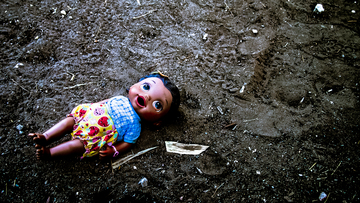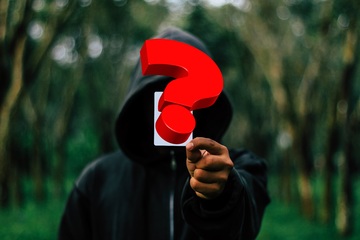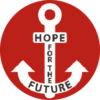
Child pornographic images and videos can be distributed quickly and easily via the Internet. It is a gigantic, global market and finding criminals and bringing them to justice is unfortunately difficult in the depths of the internet. The victims of child pornography are not only children from poor countries, so-called cybergrooming can also quickly result in images of children from Austria ending up on the dark web.
ELYSIUM – “ISLAND OF THE BLESSED”
The German Federal Criminal Police Office defines child pornography as the “photorealistic depiction of the sexual abuse of a person under the age of 14”. In 2017, German and Austrian investigators uncovered a platform called “Elysium” on the dark web. Although it had only existed for half a year at the time, it already had almost 90,000 users. A lively exchange of visual depictions of sexual violence against children took place on the platform. The participants could not only consume, but also upload their own pictures and videos. “Elysium” comes from the Greek and ironically means “island of the blessed”.
A LUCRATIVE BUSINESS
By the 1980s, child pornography had all but disappeared because it became too risky for perpetrators to send photos through the mail. But then the Internet came along, and the cruel fate of many children has taken its course ever since. Exact figures do not exist, but the Working Group for the Protection of Children from Sexual Exploitation estimates that child pornography generates 12 billion US dollars in sales worldwide every year. Unfortunately, it is not an easy task for criminologists to uncover dark web sites like “Elysium”, so no exact numbers are known.
THE OFFENDER PROFILE

According to statistics, 95 percent of people who consume child pornography are male. However, women are often involved or become accomplices if they know about the crime and do not report it to the police. By no means everyone who produces, or views child pornography is also a paedophile. According to the abuse commissioner of the German federal government Johannes-Wilhelm Rörig, only about every hundredth man shows a (solely) sexual orientation towards the child’s body schema. A significant proportion of consumers (about 30 percent) are married and have children of their own. Why these men view child pornography is unclear. Maybe it’s about compensating for personal deficits, exercising power and receiving recognition. In the forums of these platforms, the perpetrators try to outdo each other – the more cruel and brutal the act, the more admiration there is from peers. Tips are also given on which medications are best used to “sedate” children.
WHO HAS ACCESS?
The German cybercriminologist Thomas Gabriel Rüdiger regrets that child pornography is frighteningly easy to come by. The exchange between potential perpetrators often even takes place on Clearweb, for example in app stores, because the comment functions of various applications are unfortunately not sufficiently moderated. In order to be able to access a child pornography site on the dark web, one is usually asked to upload a relevant picture of a child oneself, as a sort of proof that one is not an investigator. The police are currently working on producing such images digitally using a computer program and thus gaining access. Software that connects all data globally and is intended to make it easier to centrally evaluate image material and locate perpetrators is also being developed in the USA and is already being used in some cases.
CYBERGROOMING – A TARGETED MANIPULATION MACHINE

Cybergrooming is the initiation of sexual contacts by adults with children and young people. Cybergrooming has been a criminal offence in Austria since January 1st, 2012. This type of contact is also a promising method to get photos and videos of minors in underwear or even naked, in order to then publish them on child porn sites. The perpetrators are extremely skilful: they hang around in online game chat rooms, for example, and initially ask the children harmless questions. They usually pretend to be about the same age and thus gain trust. They trick the kids into sending shirtless or underwear photos, which they can then use to blackmail them. The Federal Criminal Police Office Germany shows a very realistic example of cybergrooming in a video.
IT HAS TO STOP! – BUT HOW?
Criminologist Rüdiger sees a major problem in the fact that the perpetrators are lagging behind. If a platform has more than 100,000 users, it is impossible to investigate and punish every single one of them. There is simply a lack of capacity for this. An international force is also needed, global criminal law for crimes like these on the Internet. Unfortunately, the perpetrators also know how difficult it is to follow their tracks on the Internet and feel safe accordingly. However, technology is making more and more advances in the fight against child pornography on the web, which gives us hope.
EDUCATION IN SCHOOLS
Even photographing children in provocative poses is a crime. When a boy saves a picture of his 14-year-old girlfriend in her underwear on his phone, it’s illegal. If this picture ends up in a Whatsapp group chat, everyone who looks at this picture is also liable to prosecution.

Children and young people should therefore be taught as early as possible how quickly such seemingly harmless photos can fall into the wrong hands and what the consequences can be. A 2018 study by SOS Children’s Villages found that only 32 percent of the 11 to 18 year olds surveyed were informed about sexual harassment and violence on the internet. Not even 40 percent knew that cyber grooming is a criminal offence. 80 percent would like more education, especially through schools.
Today, elementary school children already have smartphones, so media skills should be taught to children of that age. The legal guardians must be informed about the dangers of the Internet and made aware of any warning signs. Even if we can’t rid the world of child pornography overnight, we can prevent children from becoming victims themselves through information and education.
